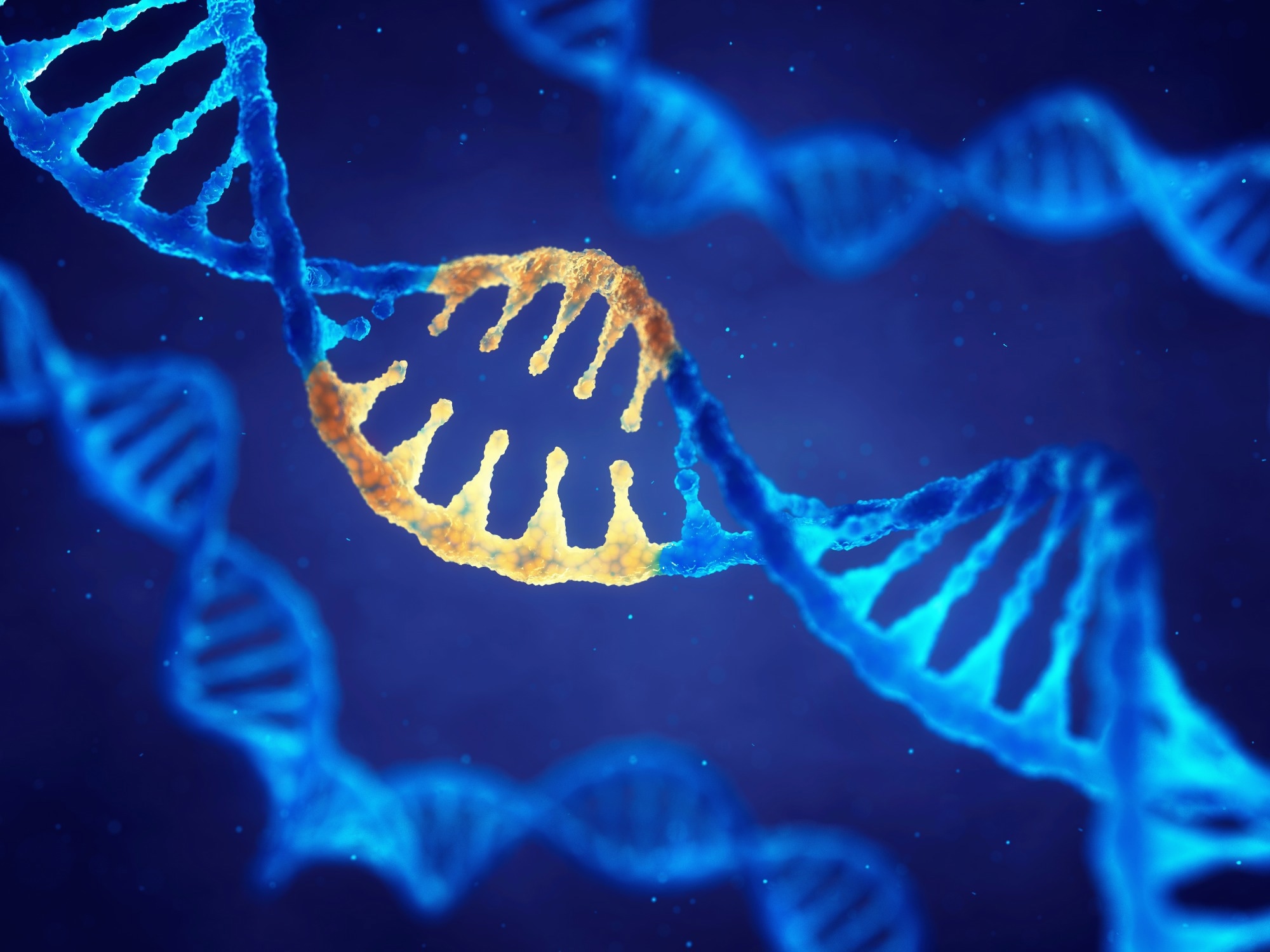OSMED, or, otospondylomegaepiphyseal dysplasia, is a rare congenital condition with vertebral body anomalies, sensorineural hearing loss, enlarged epiphyses, and skeletal dysplasia as its characteristic features. It can be caused by autosomal recessive or dominant-negative mutations that disrupt collagen XI synthesis.
The clinical phenotype and typical radiographic findings are used to make the diagnosis. Only symptomatic treatment is available.
 Image Credit: nobeastsofierce/Shutterstock.com
Image Credit: nobeastsofierce/Shutterstock.com
Cause and symptoms
OSMED is linked to homozygous mutations in the COL11A2 gene (6p21.3). This gene codes for one of the components of type XI collagen, a complex chemical that gives the connective tissues that support the body's joints and organs structure and strength.
Cartilage, a stiff but flexible tissue that makes up most of the skeleton during early development, contains Type XI collagen. Except for the cartilage that covers and protects the ends of bones and is seen in the nose and external ears, most cartilage is converted to bone.
The nucleus pulposus, the core component of the discs between the vertebrae, also contains type XI collagen. OSMED is caused by COL11A2 gene mutations that prevent type XI collagen molecules from being produced or assembled.
Collagen deficiency damages connective tissues throughout the body, including the long bones, spine, and inner ears, impairing bone formation and contributing to this disorder's other indications and symptoms.
The term "otospondylomegaepiphyseal" refers to the sections of the body that are affected by this disorder. The ears are referred to as oto, the spine's bones are referred to as spondylo, and the ends of long bones in the arms and legs are referred to as epiphyses.
The long bones in the legs are unusually short, so people with OSMED are frequently shorter than average. Enlarged joints, short arms, hands, and fingers are some of the other skeletal characteristics. Back and joint pain, flattened spine bones (platyspondyly), limited joint movement, and arthritis that occurs early in infancy are common symptoms of the disorder.
People with OSMED are more likely to have severe high-frequency hearing loss. Protruding eyes, a flattened bridge of the nose, an upturned nose with a big, rounded tip, and a tiny lower jaw are all common facial traits. Almost every affected baby is born with a hole in the roof of their mouth (a cleft palate).
Epidemiology
The prevalence is unclear; however, there have only been about 30 cases reported in the literature so far.
Case report
Williams et al., 2020 presented a woman with OSMED who had been followed for a long time. She is one of the oldest individuals with the syndrome in the literature, at 46 years old. She was born weighing just over 6 pounds to a 33-year-old G3P2 mother following toxemia and polyhydramnios-affected pregnancy.
On her mother's side, there are two distantly related relatives with an undetermined form of hearing loss, and another maternally linked individual may have had skeletal dysplasia.
She was described as floppy at birth, with unusual facial features and disproportionate limbs, raising suspicions of chondrodysplasia. Multiple epiphyseal dysplasias were examined as a possibility. The cognitive milestones were all within the normal range.
At 42, she went to the genetics clinic for a diagnostic evaluation. Her forehead was described as high and broad, with frontal bossing. Her stature was average for an adult lady, but she had a disproportionate appearance due to rhizomelic shortening of her limbs.
She had prominent joints and slender, tapering fingers with short distal phalanges due to evident thickening at the extremities of all long bones. An expert in chondrodysplasias reexamined clinical photography and bone x-rays, noting features suggestive of OSMED. Sequencing of the COL11A2 gene revealed compound heterozygosity.
The patient was monitored for two years after her previous orthopedic treatment in 2014. At the most recent follow-up, the patient denied any new concerns but described gradually deteriorating symptoms. In 2016, the patient moved closer to relatives and transferred care due to increasing difficulty with everyday chores.
Diagnosis and treatment
The clinical phenotype and typical radiographic findings are used to make the diagnosis. X-rays are among the specialized examinations available. X-ray scans reveal characteristic skeletal abnormalities linked with heterozygous OSMED.
Weissenbacher-Zweymuller syndrome (WZS) and Stickler syndrome have significant clinical overlap, according to OSMED. While the absence of visual defects distinguishes OSMED from Stickler syndrome early in childhood, the distinction between OSMED and WZS (both caused by heterozygous mutations in the COL11A2 gene) may be more difficult.
Symptomatic and supportive treatment is the major point of treatment. Closure of the cleft palate, audiometry-tailored management of hearing loss, and therapy of joint discomfort are all possible treatments.
Treatment may necessitate the collaboration of a group of professionals. Certain skeletal deformities and anomalies, such as a cleft palate, may require surgery. Affected individuals and their families may benefit from genetic counseling.
References
- Williams, B. R., Calhoun, A., Holton, K. J., Kelly, B. J., & Sembrano, J. N. (2020). Otospondylomegaepiphyseal Dysplasia: A Case Report of Clinical and Radiographic Findings. JBJS case connector, 10(4), e20.00140. https://doi.org/10.2106/JBJS.CC.20.00140
- Otospondylomegaepiphyseal dysplasia. [Online] MedlinePlus. Available at: https://medlineplus.gov/genetics/condition/otospondylomegaepiphyseal-dysplasia/
- OSMED Syndrome. [Online] NIH-GARD. Available at: https://rarediseases.info.nih.gov/diseases/4130/osmed-syndrome
- OTOSPONDYLOMEGAEPIPHYSEAL DYSPLASIA, AUTOSOMAL RECESSIVE; OSMEDB. [Online] OMIM. Available at: https://omim.org/entry/215150
- OSMED, Heterozygous. [Online] National organization for Rare Disorders. Available at: https://rarediseases.org/rare-diseases/osmed-heterozygous/
Further reading
Last Updated: Sep 6, 2023